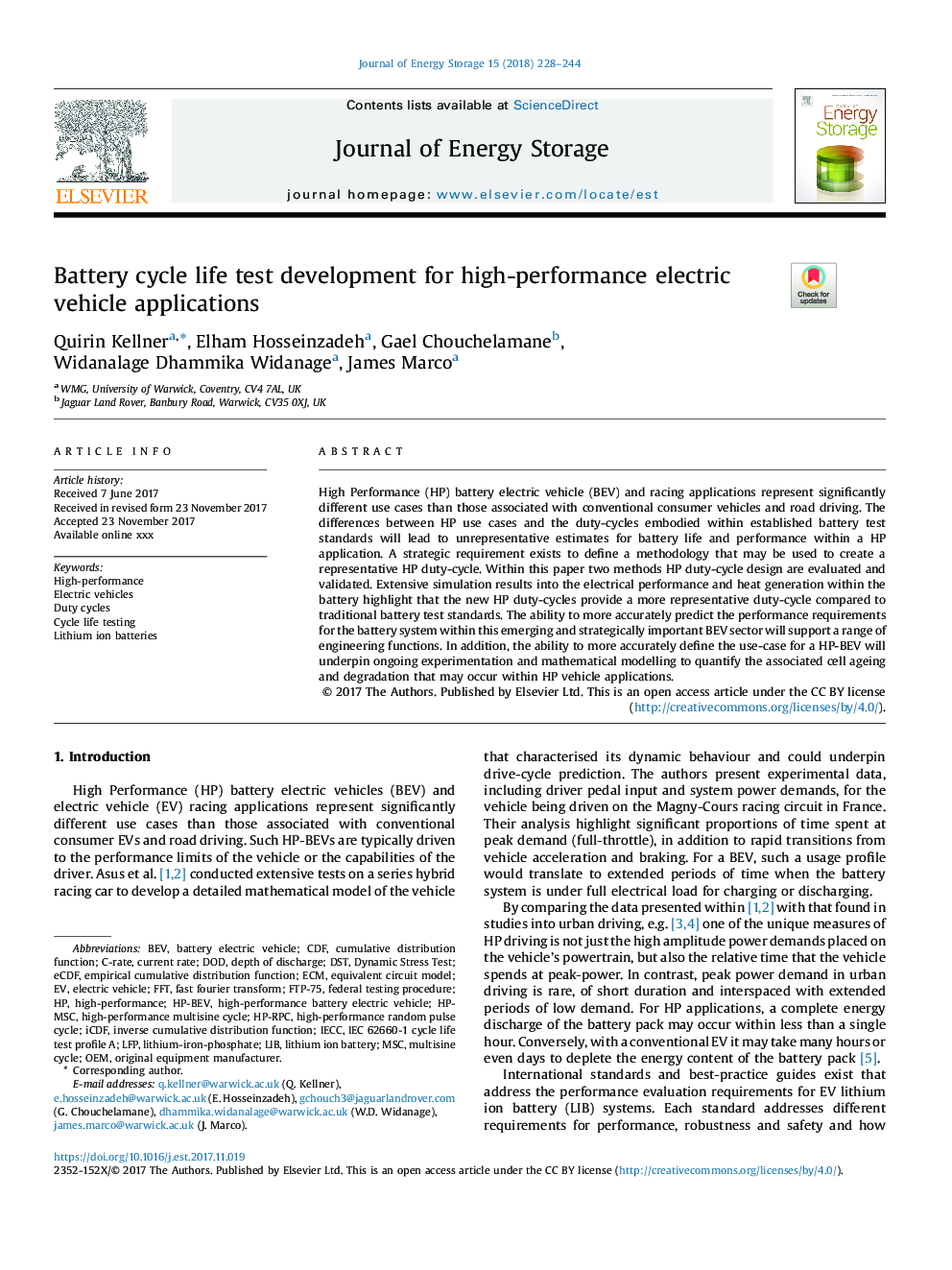| Article ID | Journal | Published Year | Pages | File Type |
|---|---|---|---|---|
| 7540203 | Journal of Energy Storage | 2018 | 17 Pages |
Abstract
High Performance (HP) battery electric vehicle (BEV) and racing applications represent significantly different use cases than those associated with conventional consumer vehicles and road driving. The differences between HP use cases and the duty-cycles embodied within established battery test standards will lead to unrepresentative estimates for battery life and performance within a HP application. A strategic requirement exists to define a methodology that may be used to create a representative HP duty-cycle. Within this paper two methods HP duty-cycle design are evaluated and validated. Extensive simulation results into the electrical performance and heat generation within the battery highlight that the new HP duty-cycles provide a more representative duty-cycle compared to traditional battery test standards. The ability to more accurately predict the performance requirements for the battery system within this emerging and strategically important BEV sector will support a range of engineering functions. In addition, the ability to more accurately define the use-case for a HP-BEV will underpin ongoing experimentation and mathematical modelling to quantify the associated cell ageing and degradation that may occur within HP vehicle applications.
Keywords
ECMC-rateDuty cyclesCDFLiBMSCFFTLFPDODDSTBEVlithium ion batterylithium ion batteriesCumulative Distribution FunctionEmpirical cumulative distribution functionFast Fourier transformElectric VehicleElectric vehiclesoriginal equipment manufacturerDepth of dischargehigh-performance Equivalent circuit modelOEMBattery electric vehicle
Related Topics
Physical Sciences and Engineering
Energy
Energy (General)
Authors
Quirin Kellner, Elham Hosseinzadeh, Gael Chouchelamane, Widanalage Dhammika Widanage, James Marco,
